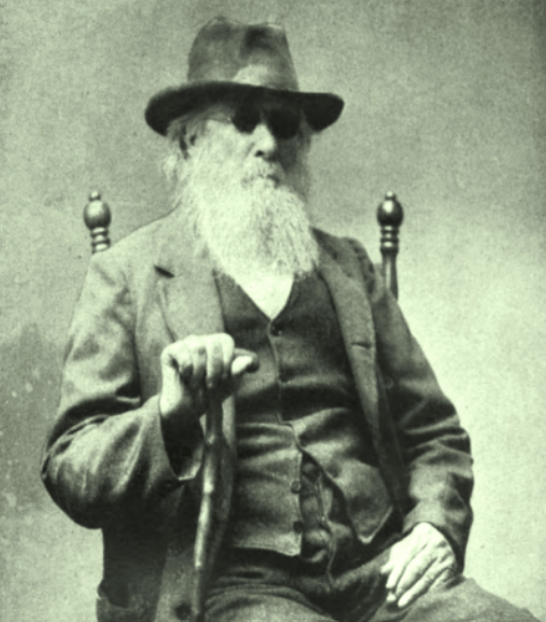
Penateka Comanche Chief Muguara (also known as Mukewarrah or Mukewaka) is an arresting figure to me not only because he lived right here where we live, but because so much of what happened between the Comanche and the settlers hinged on his actions as a primary speaker for the Comanche at the Council House meeting in San Antonio. Muguara, translated by some to mean ‘spirit talker’, had at least a seasonal residence in our area, said to be along a small creek, south of Santa Anna.
I wrote about him and the probable connection to the area name Mukewater a few months back. Since then, I’ve learned some new details that give a better picture of what he was like as a man. There is, as I wrote in the previous column you can find here, a cemetery near Bangs named for him, as well as a now defunct settlement near the Brown/Coleman County line, and of course, Mukewater Creek.
Muguara was a well known personage to many early settlers in Texas, particularly so to Texas Ranger and author of the book The Evolution of a State, Noah Smithwick. Smithwick was friends with Muguara. He lived with the tribe for several months, subsequently recording his memories of the experience. His descriptions of Muguara are fascinating. In one passage, Smithwick attributes an impassioned speech regarding a proposal to solve the conflicts caused by the ever-growing tide of settlers sweeping into Comanche territories to Muguara. He quoted Muguara this way, “We have set up our lodges in these groves and swung our children from these boughs from time immemorial. When game beats away from us, we pull down our lodges and move away, leaving no trace to frighten it, and in a little while it comes back. But the white man comes and cuts down the trees, building houses and fences, and the buffaloes get frightened and leave and never come back, and the Indians are left to starve, or if we follow the game we trespass on the hunting ground of other tribes and war ensues … If the white men would draw a line defining their claims and keep on their side of it the red men would not molest them.” Sadly, the proposals for peace that Smithwick and Muguara worked to flesh out would never come to pass.
At the ill-fated Council House meeting in San Antonio in 1840, Chief Muguara played the prominent role as negotiator for the Comanches. The talks fell apart when Muguara explained he could not bring in more captives that belonged to other bands without more bartering. “How do you like that answer?”, Muguara asked. The Texans did not like that answer at all, and a bloody fight between the Texas Rangers and the Comanche chiefs inside the Council House ensued. A March 24, 1840 edition of the Texas Sentinel described what happened next: “Pandemonium ensued as the Comanches responded with shrill war cries and rushed for the door. A war chief stabbed a soldier who attempted to block the door with his body, and Fisher gave the command to open fire. Muguara was killed instantly, and in the confusion caused by echoing blasts of gunfire, howls and screams of the Comanches and thick clouds of swirling black powder smoke, the surviving Comanches broke out of the building.”
A detailed recitation of the old chief’s appearance can be found in a book called Comanche Political History by Thomas W Kavenagh. Muguara, along with his friend Noah Smithwick, was observed by a young French doctor as he passed through Austin in 1838 on the way to meet with Sam Houston in Houston. The description reads,“…some one hundred Comanche Indians… A Texan officer was serving as their guide. The Comanche tribe has remained powerful; it is still feared in Texas, where Spanish legends have given it a reputation for bravery and ferocity which is all too accurate… But of all the Indians the one whose costume was the most bizarre was unquestionably the old chieftain. He wore a narrow red belt around the waist, a blue uniform with a red collar, the remains of epaulets and metal buttons, the sort of uniform worn by our [French] National Guard or our infantry soldier…and a hat covered with oil-cloth like our postilions…This hat was a Mexican’s whom he had killed a short time previously during a skirmish in the Rio Grande valley.“
In Smithwick’s book, I found several other personal details about Muguara that are interesting. He was a tall man who was elderly at the time Smithwick met him. He was wiry thin, and considered fearsome looking by the settlers. Also of note Muguara was bald, an unusual condition for a Comanche which Smithwick attributes to Muguara’s frequent exposure to Anglo civilization. The old chief was loyal, protecting Smithwick from a group of Waco warriors who demanded he be handed over to them for the purpose of killing him. Muguara told the Waco they would have to kill him first. He was also the tribe’s medicine man, and carried a bag of remedies wherever he went. Muguara also liked to drink liquor, something most other members of his tribe avoided.
I like to picture characters like Muguara in my mind, and I feel like I have a pretty clear image of him now. It adds spice to the morning drive to imagine this old chief, dressed in the gaudy remnants of a soldier’s uniform, along with his band of followers, racing their ponies up onto Wild Horse Flat (now called Bangs) and down the hill. How they must have galloped along the banks of Pecan Bayou, hunting the buffalo that darkened the fields around us by the millions. I feel like it’s important not to forget.
***
Diane Adams is a local journalist whose columns appear Thursdays on BrownwoodNews.com
